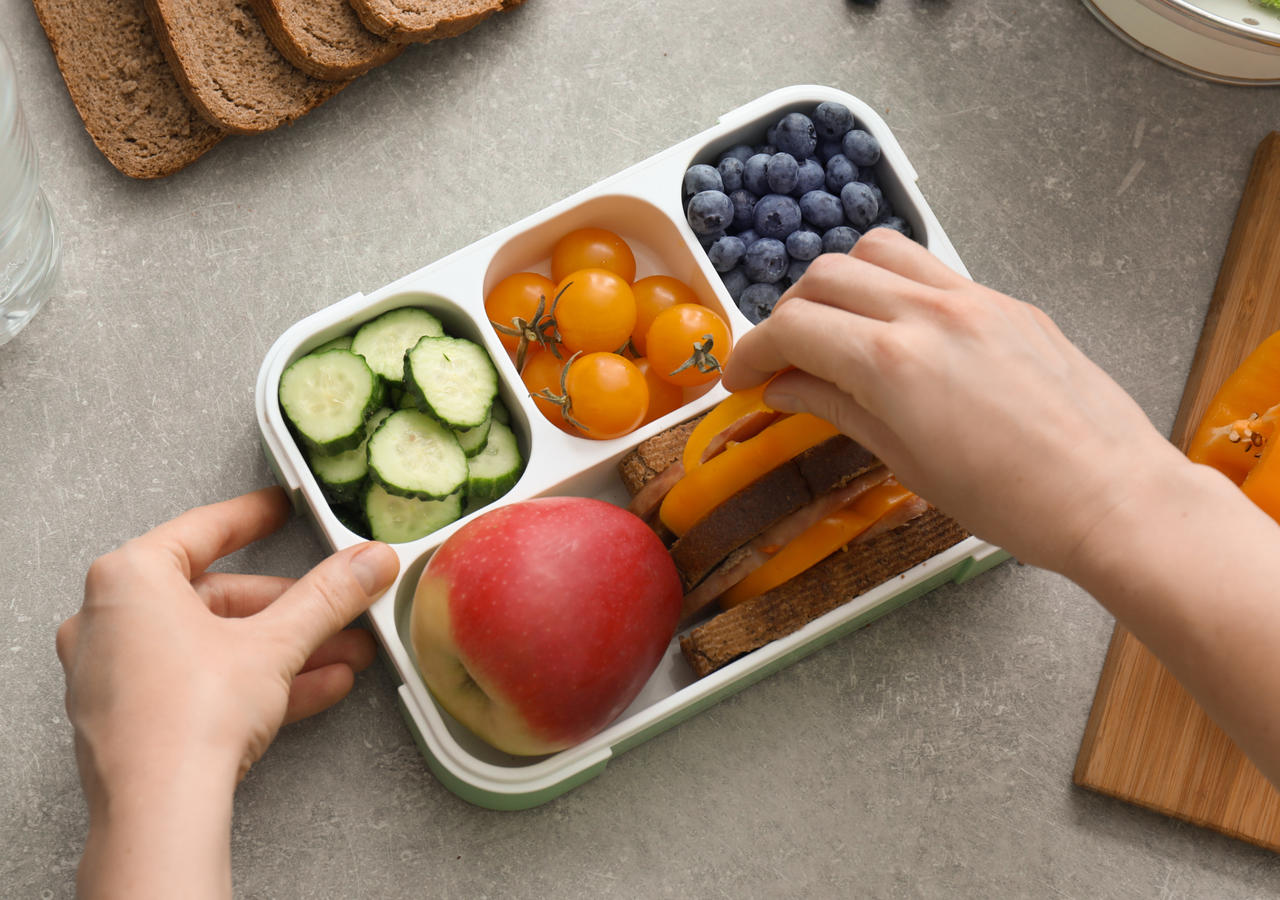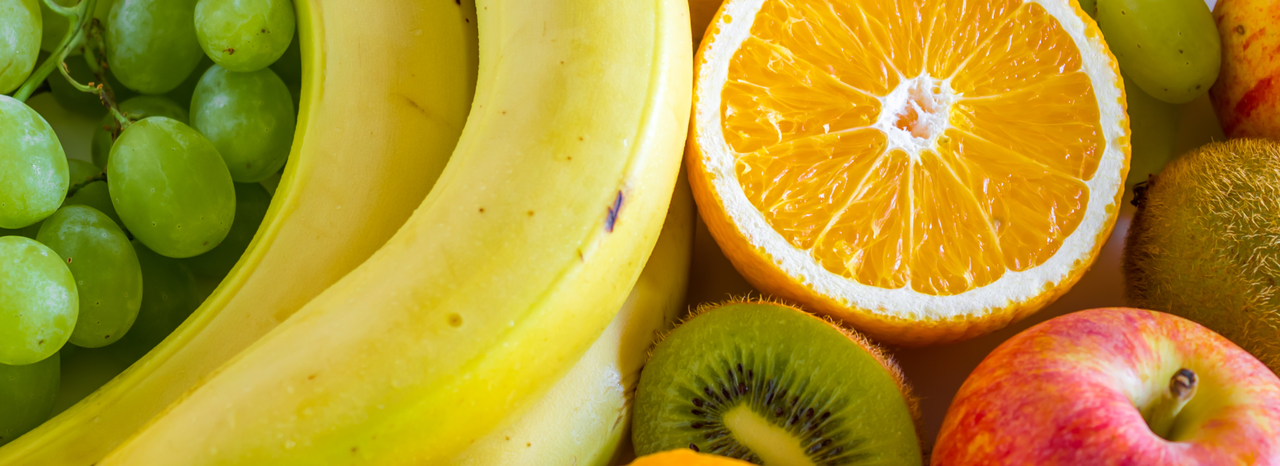Healthy lunchboxes, happy guts: 5 food swaps your child’s gut will love
Written by: Alba Health team
Reviewed by: Amanda Ahlberg, Certified Nutritionist
Last updated: 2025-10-15

Summary
Even small changes to what goes into your child’s lunchbox can have a big impact on their gut health. Here are five simple, science-backed swaps that keep meals tasty, balanced, and supportive of a thriving microbiome.
Packing a lunchbox that’s both delicious and nutritious can feel like a challenge. There’s a lot of advice out there about what kids should eat, but the truth is that small, simple changes can make a big difference to your child’s gut health – a cornerstone of their overall growth and well-being. A balanced gut microbiome supports everything from immune function to mood [1].
This article will give you five simple, practical swaps for your child's lunchbox. These are easy changes that will help to nourish the trillions of microbes living in their gut. We'll focus on adding more fiber, reducing added sugars, and choosing whole foods over processed ones, all of which are key to a happy gut.
1. Swap sweetened yogurt for plain yogurt with berries
Many yogurts marketed to children are packed with added sugars. A simple swap is to use plain, unsweetened yogurt and add a handful of fresh or frozen berries. Fermented dairy like yogurt can support a healthy gut ecosystem, and pairing it with fiber-rich berries adds fuel for beneficial microbes [2].
Concrete example:
Instead of a strawberry-flavored yogurt tube, which can contain as much as 10 grams of added sugar, pack a small container of plain Greek yogurt with a half-cup of mixed berries. You can even swirl in a teaspoon of honey if your child prefers a little sweetness.
2. Swap fruit juice for whole fruit
While fruit juice might seem like a healthy option, it's essentially just the sugar and water from the fruit, without the beneficial fiber. Fiber is crucial for gut health as it feeds good bacteria and supports normal digestive function [3]. Whole fruits also deliver vitamins and minerals.
Concrete example:
Instead of a juice box, pack a small apple, a banana, or a handful of grapes. If your child loves oranges, peel one and pack the segments in a container. For a fun twist, you can make fruit kebabs with a mix of their favorite fruits.

3. Swap white bread for whole-wheat or sourdough
White bread is made from refined flour, which has had most of its fiber and nutrients removed. Whole-wheat bread keeps the entire grain (and fiber), while traditionally fermented sourdough can make nutrients more accessible and may be gentler on digestion [4].
Concrete example:
Make your child's sandwich with two slices of whole-wheat or sourdough bread instead of white bread. If your child is resistant to the change, you can start with one slice of each, or look for a "white whole-wheat" bread, which has a milder flavor and softer texture.
4. Swap processed snacks for whole-food alternatives
Processed snacks like crackers, chips, and cookies are often high in refined flours, unhealthy fats, and added sugars, and low in fiber and nutrients. Whole-food alternatives (nuts, fruit, veg, legumes) better support a diverse, resilient gut microbiome [5].
Concrete example:
Instead of a bag of chips, pack some crunchy carrot sticks with hummus, a handful of almonds (for older children), or a small container of olives. Instead of a cookie, pack a couple of dates, a small handful of trail mix, or a homemade oat and fruit bar.
5. Swap sugary drinks for water or milk
Sugary drinks like soda, sports drinks, and sweetened iced teas are a major source of added sugars in many children's diets and are linked with less favorable microbiome patterns [6]. Water is the best choice for hydration, and milk is a good source of calcium and vitamin D.
Concrete example:
Pack a reusable water bottle in your child's lunchbox every day. If they find water boring, you can add a slice of lemon or a few berries for flavor. If you pack milk, make sure it's plain and unsweetened.
Summary
- Swap sweetened yogurt for plain yogurt with berries to cut down on sugar and boost fiber.
- Choose whole fruit over fruit juice to ensure your child gets the fiber their gut needs.
- Switch from white bread to whole-wheat or sourdough for more fiber and potentially gentler digestion.
- Replace processed snacks with whole-food alternatives like fruits, vegetables, and nuts.
- Encourage your child to drink water or milk instead of sugary drinks.
Making these small changes to your child's lunchbox can have a big impact on their gut health and overall wellbeing. Start with one or two swaps and see how your child responds. Every little step you take towards a healthier lunchbox is a step towards a happier gut.
- Robertson RC et al. 2019. The human microbiome and child growth. Trends Microbiol.
- Marco ML et al. 2017. Health benefits of fermented foods. Curr Opin Biotechnol.
- Wiertsema SP et al. 2021. Gut microbiome, diet and immunity. Nutrients.
- Korpela K. 2018. Diet, microbiota and metabolic health. Annu Rev Food Sci Technol.
- Aziz T et al. 2024. Diet and gut health. Gut Microbes.
- De Vos WM et al. 2022. Gut microbiome and health: insights. Gut.
Curious about your child’s gut health?
Discover your child’s gut health with Alba’s pioneering test – and get expert, personalized guidance from a certified Nutrition & Health Coach to help it thrive.
Get started

